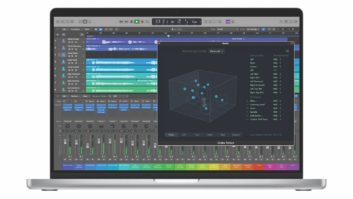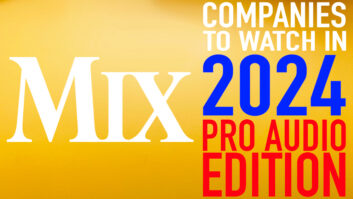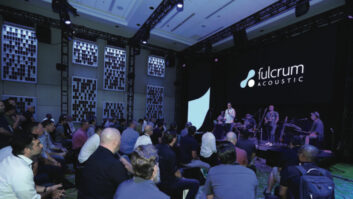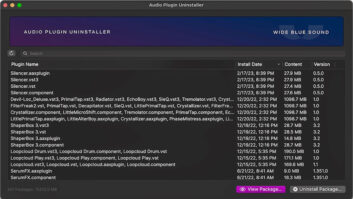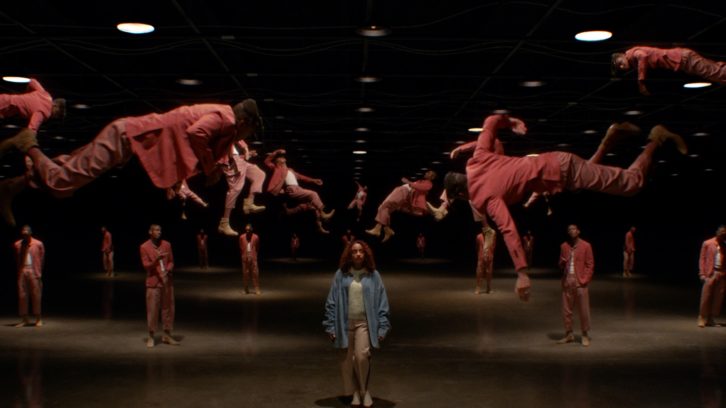 The revolution will not be televised, Gil Scott-Heron declared in 1970. But this fall, during the World Series and on college football Saturdays, viewers saw Justin Bieber during a commercial break talking about his single, about how “that’s the best I’ve ever heard that song,” and how he “felt it over here; I felt it up here; I felt it up at the top.”
The revolution will not be televised, Gil Scott-Heron declared in 1970. But this fall, during the World Series and on college football Saturdays, viewers saw Justin Bieber during a commercial break talking about his single, about how “that’s the best I’ve ever heard that song,” and how he “felt it over here; I felt it up here; I felt it up at the top.”
He’s talking about hearing his hit single “Ghost” mixed in Dolby Atmos, and before it cuts to the next commercial, the full-title screen pops up: “Now on Apple Music.” What if Scott- Heron was wrong—at least as it regards music distribution and playback—and we’re living through the start of a revolution but just don’t know it?
Dolby has been working hard behind the scenes over the past few years to bring its brand of immersive music to the masses. The major labels, most notably Universal Music Group and Warner Bros., are onboard, hiring mixers around the world to rework a long list of classics into the Atmos format. UK speaker manufacturer PMC has been a staunch ally, playing no small part in the promotion of the immersive format and an active role in remixing catalog tracks.
But to get this music to everyone’s ears, you need to bring out the big guns. Which brings us to this summer and Apple’s announcement that it was launching Spatial Audio with support for Dolby Atmos on its Apple Music service, free to all subscribers. Thousands of tracks would be available, Apple promised, with more added regularly. Oh, and 75 million songs are available in lossless audio now.
“How is that revolutionary?” you ask. “I can already hear immersive music on TIDAL, Amazon and a couple other places.”
True enough. But Apple wasn’t finished. At its October launch event, the company introduced two new models of Apple Silicon-powered MacBook Pro notebooks and third-generation AirPods with headtracking, also offering a brief glimpse into Logic Pro 10.7 software with integrated Dolby Atmos tools, which debuted just days later.
WHAT’S IT ALL MEAN?
These new product announcements, particularly regarding Apple Music Spatial Audio, were met with some confusion and skepticism. There appears to have been some misunderstanding of the original announcement, leading to the unwitting spread of misinformation online. It’s not just Apple’s messaging that has folks in a muddle, either; the pro audio industry’s language can often be opaque, as Craig Anderton explores on page 50 in this issue. All that will sort itself out in the coming months as engineers and artists familiarize themselves with the tools
Meanwhile, let’s not miss the forest for the trees. Over the course of this summer, Apple rolled out an immersive music ecosystem that can take an idea all the way from the mind of a musician to the ears of his or her fans, from production to distribution to delivery. For a few thousand dollars, anyone can now produce and mix a song in Dolby Atmos using just these tools and deliver it to a global audience through Apple Music Spatial Audio streaming, where it’s delivered over headphones in binaural. And they can produce and mix anywhere.
Can you truly produce a finished Dolby Atmos track using only Apple’s core immersive tools? We humans are not great at localizing sounds from certain directions with any degree of accuracy, so there are definitely limitations to mixing in Dolby Atmos while monitoring a virtualized downmix in binaural on headphones, even with headtracking.
As Manny Marroquin, owner of Larrabee Sound Studios in Los Angeles and a multi- Grammy winner with 15,000 mixes to his credit, points out, “You can get it 80 percent there without having a studio setup. I’ve got to give Apple credit for this new Logic. They’re like, ‘We’re not going to wait for the revolution to happen with speakers, we’re going to do it in a way that even in headphones you can take it there,’ even if it’s 80 percent.”
That done, take your mix to a dedicated immersive room to add the final 20 percent and it’s ready for uploading to Apple Music.

